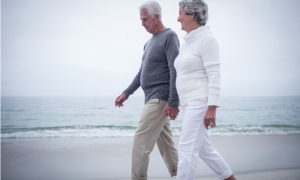 Many recipients of knee and hip replacements are missing out on the full potential benefit from their arthroplasties by not increasing their level of physical activity post-surgery.
Many recipients of knee and hip replacements are missing out on the full potential benefit from their arthroplasties by not increasing their level of physical activity post-surgery.
A three-year follow-up study of more than 1,000 knee and hip arthroplasty recipients found about a third do not engage in physical activity at least once a week.
For the purpose of the study, physical activity was defined as energy expenditure undertaken for health or fitness and excluded incidental walking or other activities such as gardening or child minding.
The study found 63.5% of participants were regularly participating in physical activity such as walking and other low impact exercise including swimming, cycling and gym.
Importantly, one of the main potentially modifiable predictors of physical activity post-surgery was participation prior to surgery.
The findings suggest pre-surgery advice, education and encouragement might play an important role in long-term health outcomes.
Researcher Dr Justine Naylor, from the Whitlam Orthopaedic Research Centre at the Ingham Institute for Applied Medical Science, told the limbic all health practitioners should be sending the same message about physical activity.
“The ideal would have been to use physical activity to avoid surgery in the first place but given we are dealing with people who are having surgery then we need to say that since the horse has bolted for preventing surgery, let’s now talk about how you get the most out of it.”
She said patients need support to becoming physically active to a level that helps with common comorbidities such as obesity, hypertension, diabetes or high cholesterol.
“The earlier we get to sell that message the better,” she said.
“There are opportunities prior to being waitlisted for that to happen. Once they’re waitlisted for surgery, it’s now about losing weight or getting active to get fit for surgery and then hopefully to maintain that sort of behavior post-surgery.”
She said joint replacement patients, more than other people, have a good reason to get active.
“They have the opportunity now, for the first time in a long time, to become more active. The logic is that if the surgery helps reduce the pain and helps the joint move better than surely you can become more active and lose weight and reap all the benefits that come from it. But it’s just not happening.”
“If it’s not happening naturally and passively, then all of us who treat these patients have to sell that message and the earlier the better.”
She said international and local guidelines meant there was no reason that advice could not be consistent.
“It’s a lost opportunity if people don’t take advantage of their new symptom-free or symptom-reduced state and get back to moving more for overall health.”